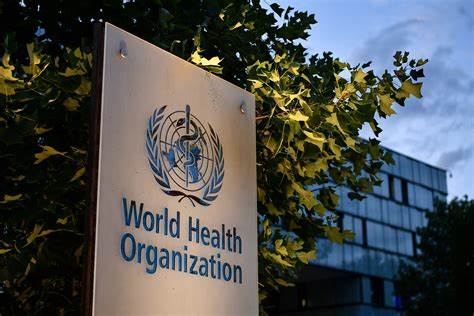In 2021, the World Health Organization (WHO) released a troubling report highlighting a major public health issue: 30 people were drowning every hour worldwide. This statistic paints a stark picture of the ongoing global drowning crisis, which remains a leading cause of unintentional injury death. Drowning is often overlooked as a serious threat compared to other public health risks, yet its impact on families, communities, and healthcare systems is profound. According to the WHO, nearly 236,000 people died from drowning in 2021 alone, making it a major health issue that warrants urgent attention and action.
The Global Drowning Crisis
Drowning knows no geographical boundaries and affects both developed and developing nations. The WHO report underscores the fact that drowning is not limited to specific regions but is a problem that stretches across continents. While drowning rates are higher in low- and middle-income countries, developed nations also face significant incidents of drowning. Factors such as access to water bodies, lack of water safety education, and socio-economic disparities contribute to the global extent of the problem.
One of the most alarming aspects of the WHO report is the age group most affected by drowning. Children, particularly those under the age of 5, are disproportionately affected by drowning. In many developing countries, children fall victim to drowning due to lack of supervision, unsafe water environments, and insufficient barriers around water sources. In wealthier nations, although drowning rates have decreased, incidents still occur, particularly involving young adults and individuals under the influence of alcohol or drugs.
Risk Factors for Drowning
Several factors contribute to the high rate of drowning globally. Some of the most common risk factors identified in the WHO report include:
- Lack of Swimming Skills: One of the leading causes of drowning is a lack of swimming ability. Many individuals, especially children in poorer regions, have not learned how to swim, putting them at high risk when they come into contact with water bodies.
- Water Safety Education: In many parts of the world, water safety education is either lacking or non-existent. Without knowledge of how to stay safe in and around water, individuals are more likely to make risky decisions, increasing the likelihood of drowning.
- Environmental Factors: Unsafe water environments are a significant risk factor. Unprotected bodies of water such as rivers, lakes, and ponds pose a higher danger, particularly for children who may fall into them unexpectedly. Poor infrastructure, such as the absence of barriers or warning signs, further exacerbates the problem.
- Alcohol and Drugs: In many drownings, particularly in adult populations, alcohol consumption is a contributing factor. Alcohol impairs judgment, coordination, and swimming ability, increasing the likelihood of drowning, particularly in swimming pools, lakes, or oceans.
- Access to Water: In rural areas, especially in low-income countries, families may live near bodies of water, increasing the likelihood of accidental drownings. In urban settings, people often engage in risky behavior such as swimming in unsafe areas.
- Climate Change: Changing environmental conditions due to climate change can also contribute to drowning. Rising sea levels, storms, and flooding events create new hazards, making bodies of water more dangerous and increasing the likelihood of drowning during natural disasters.
WHO’s Recommendations for Prevention
To address the alarming rates of drowning, the WHO has provided a set of key recommendations aimed at reducing global drowning rates. These guidelines include:
- Water Safety Education: One of the most effective ways to prevent drowning is through comprehensive water safety education. The WHO encourages governments, schools, and organizations to implement programs that teach children and adults how to swim and recognize water hazards. Teaching individuals about basic water survival skills can significantly reduce the risk of drowning.
- Improved Infrastructure: Another important recommendation is the improvement of infrastructure around bodies of water. This includes the installation of safety barriers around pools, rivers, and lakes, as well as the introduction of warning signs and proper supervision in swimming areas. Governments are encouraged to invest in public safety measures to minimize the risk of drowning, particularly for vulnerable populations such as children and elderly individuals.
- Legislation and Policy: The WHO urges governments to implement legislation that requires safety measures such as life jackets in certain areas, particularly in water sports and recreational activities. Additionally, the WHO recommends policy measures that address the underlying social determinants of drowning, such as poverty and lack of access to healthcare.
- Enhanced Surveillance and Data Collection: Drowning is often underreported, especially in developing countries where there may be limited data collection systems in place. The WHO calls for improved surveillance and reporting of drowning incidents to help identify high-risk areas and vulnerable populations, enabling better-targeted interventions.
- Community Engagement: Community-based interventions play a vital role in drowning prevention. The WHO emphasizes the importance of involving local communities in water safety education programs and encouraging them to create safer water environments. Community involvement can also increase awareness and change behavior, reducing the likelihood of drowning.
- Support for Post-Drowning Care: For individuals who survive drowning, timely medical intervention is crucial. The WHO highlights the need for better access to emergency medical services and post-drowning care, particularly in rural or underserved areas.
Global and Local Success Stories
Despite the grim statistics, there are examples of success in the fight against drowning. Several countries have made significant progress in reducing drowning rates by implementing effective water safety measures. In countries like Sweden and Australia, water safety education is a key part of the curriculum, and as a result, drowning rates have been significantly reduced.
In Bangladesh, where drowning rates are among the highest in the world, the government has focused on improving water safety education and promoting the use of life jackets. Community-based programs that teach children how to swim have been particularly successful in reducing child drowning deaths.
The Maldives, a nation made up of islands, has also made strides in water safety. The country has introduced legislation requiring life jackets on ferries and boats, and community outreach programs have helped raise awareness about the importance of water safety.
The Importance of a Holistic Approach
Addressing the drowning crisis requires a holistic approach that combines education, infrastructure, policy, and community engagement. No single solution will be sufficient to eliminate drowning deaths, and a multi-faceted approach is necessary to tackle the issue from all angles.
The role of governments, non-governmental organizations, and local communities is critical in implementing water safety measures and raising awareness about the dangers of drowning. Through collaborative efforts, it is possible to reduce drowning rates and prevent the unnecessary loss of life.
The report released by the WHO highlighting that 30 people drown every hour worldwide in 2021 serves as a wake-up call for global action. Drowning is a preventable tragedy, yet it continues to claim thousands of lives each year. By addressing the risk factors, implementing effective prevention strategies, and working together across borders, we can reduce the burden of drowning and protect lives.
The importance of water safety education, improved infrastructure, and community-based efforts cannot be overstated. By taking steps to increase awareness and protect vulnerable populations, we can work toward a future where drowning is no longer a leading cause of death.
Ultimately, the goal is clear: no more families should lose loved ones to drowning, and no community should have to endure the grief of preventable water-related deaths. Through proactive measures, global collaboration, and a commitment to change, we can save lives and make drowning a thing of the past.























